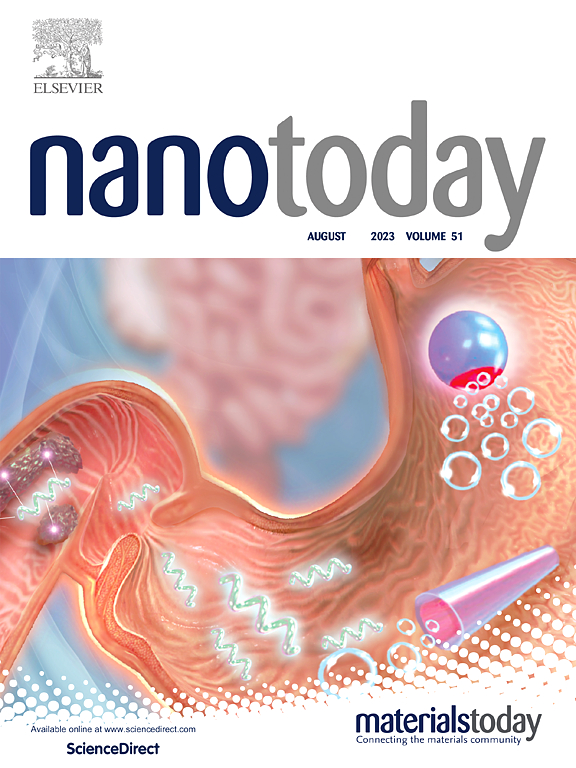Microalgae-based drug delivery microspheres for treatment of hyperuricemia with renal injury
IF 13.2
1区 材料科学
Q1 CHEMISTRY, MULTIDISCIPLINARY
引用次数: 0
Abstract
Hyperuricemia is a common metabolic disease caused by an abnormally high level of uric acid (UA) due to excessive production or insufficient renal excretion, which progresses continuously and leads to severe kidney damage. In this study, an oral microsphere strategy (Eug/Lut@HAMA) was developed by encapsulating euglena (Eug) and luteolin (Lut) within methacrylated hyaluronic acid (HAMA) microspheres as a potential treatment for hyperuricemia with renal injury. Eug has UA adsorption capabilities, Lut aids in reducing UA formation, and HAMA microspheres possess adhesive properties. Eug/Lut@HAMA effectively reduced UA levels and provided protective effects against UA-induced reactive oxygen species production and cellular apoptosis. The microspheres demonstrated reduced gastric drug loss, prolonged intestinal retention, and sustained Eug and Lut release. Eug and Lut exhibit complementarity in the treatment of acute/chronic hyperuricemia, with Eug increasing UA excretion and Lut decreasing UA production. Eug/Lut@HAMA offered multiple benefits in improving renal injury, including anti-inflammatory, antioxidant, and anti-fibrotic properties. Additionally, Eug/Lut@HAMA demonstrated long-term biosafety for oral administration. This study presents a novel, effective, and safe approach to managing acute/chronic hyperuricemia with renal injury by reducing UA production and enhancing UA excretion.
求助全文
约1分钟内获得全文
求助全文
来源期刊

Nano Today
工程技术-材料科学:综合
CiteScore
21.50
自引率
3.40%
发文量
305
审稿时长
40 days
期刊介绍:
Nano Today is a journal dedicated to publishing influential and innovative work in the field of nanoscience and technology. It covers a wide range of subject areas including biomaterials, materials chemistry, materials science, chemistry, bioengineering, biochemistry, genetics and molecular biology, engineering, and nanotechnology. The journal considers articles that inform readers about the latest research, breakthroughs, and topical issues in these fields. It provides comprehensive coverage through a mixture of peer-reviewed articles, research news, and information on key developments. Nano Today is abstracted and indexed in Science Citation Index, Ei Compendex, Embase, Scopus, and INSPEC.
 求助内容:
求助内容: 应助结果提醒方式:
应助结果提醒方式:


